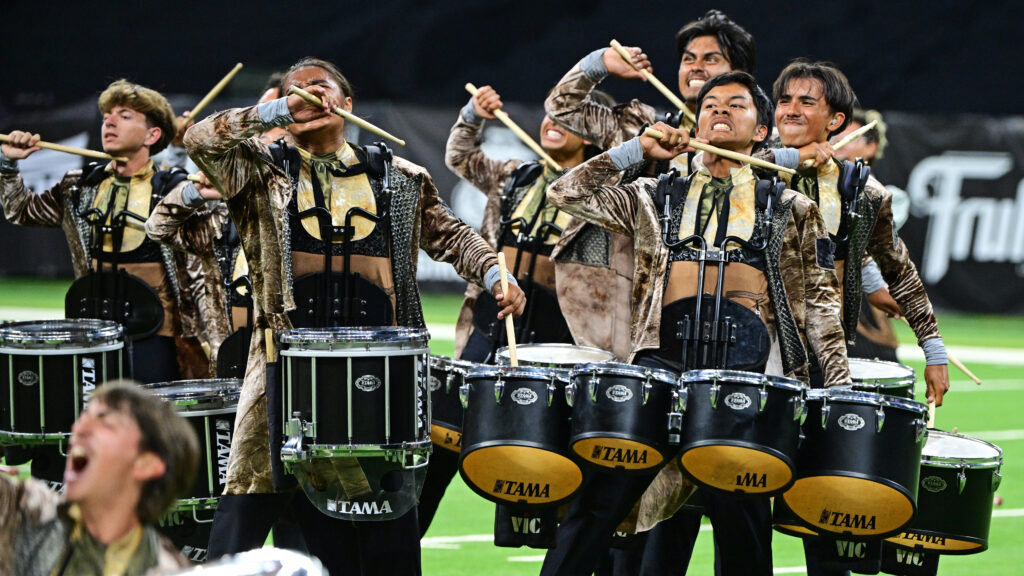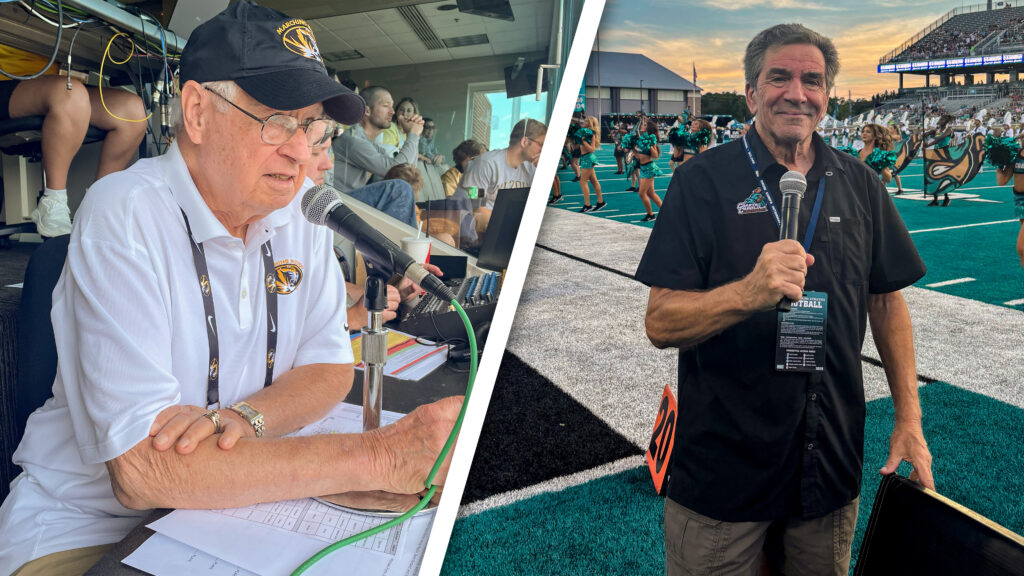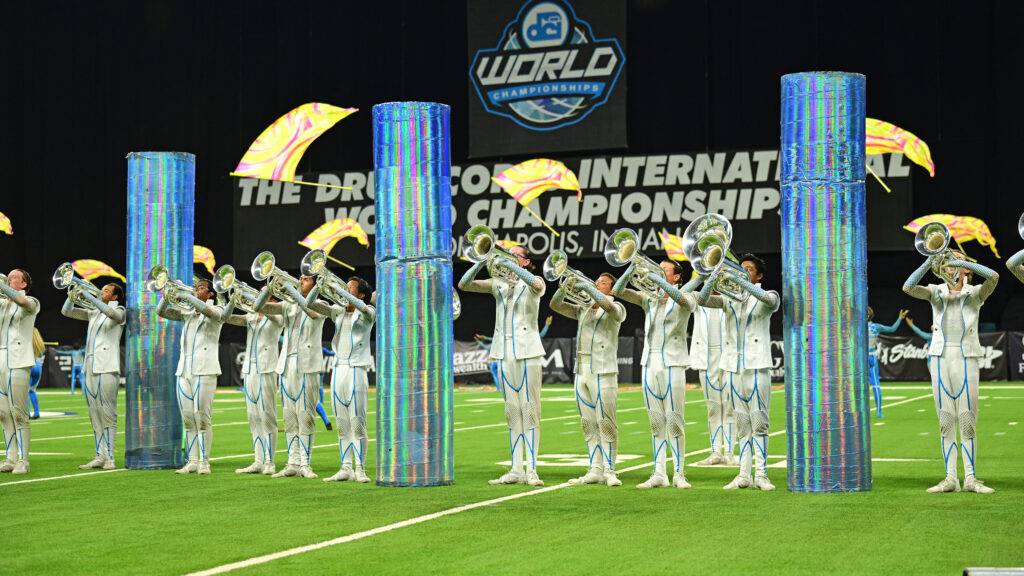Santa Clara Vanguard’s 1999 production, “Inventions for a New Millennium,” was in many ways one of those walks on the far side that perhaps shouldn’t have worked, but did.
The word from the West Coast early in the season was that audiences were not buying into the minimalism of the Philip Glass opener and the urbane intellectualism of the two Samuel Barber pieces that followed. By the time the “Blue Shades” closer came along, many were wondering why that couldn’t have inhabited more of the show.
But somewhere toward the end of the season, Vanguard started selling the show and audiences began buying in to the concept, becoming intrigued and captivated.

“The Canyon” by Philip Glass was undeniably a risky choice for an opening selection. Mostly quiet and repetitive in its simple rhythmic framework, the piece practically forced fans to lean forward to catch all the subtle idiosyncrasies that made the work much more complex than it may have sounded on first exposure. Visually, the piece slowly unwound from a lower right corner horn block triangle. It didn’t feature a melody as much as it did a mood of ominous palpitating audio fragments of what might pass as a melody on some distant planet. And it was utterly magnificent.
Occasional outbursts of angular brass cries and front ensemble protestations were more like sonic interruptions of some previously scheduled melody that had been bumped for a message from the Emergency Broadcast System. How on earth the piece worked was a mystery then and now, but it was one of those magical moments that made fans hum the piece as they left the stadium, even if they couldn’t come remotely close to getting the melody or rhythmic pulse nailed down. And if they tried replicating the rhythm, they were more likely to trip over their own two feet than capture the rhythmic pulse in its repetitive glory.
Following, a selection from Samuel Barber’s “Symphony No. 2” captured the emotional distress of the composer’s angst with its brutal sonic boom-like angularity. This was anger barely contained by the frenzied brass and the hostile drums. Listening to it unfold was akin to watching a mushroom cloud rise over the horizon. And then, at the height of the intensity, when the hammer blows to one’s consciousness just about beat one into aural submission, two narrow blocks of horns, one in front and one in back, pivoted mirror-like as another block forced itself into the middle and everything suddenly resolved into one massive horn block. Simple and direct, the effect was spellbinding for the audience.

The brooding, elegiac theme from Barber’s “Symphony No. 1” offered another glimpse into the composer’s tormented creative soul. One of the most hauntingly beautiful melodies ever put on the football field; the work was built around unexpected melodic skips that caught one off guard, with a practically unnoticeable metallic pit interruption that duplicated one of the mallet disruptions from “The Canyon.” The melody, ever slowly building toward the climax, wrung out the emotion as if it was a wet beach towel dripping blood from the brow of Barber with each twist.
Frank Ticheli’s “Blue Shades” showed up just in time, before anyone had a chance to succumb to the musical anxiety. Infused with a quirky jazz beat that left fans wondering if they should tap their feet or swat at imaginary mosquitoes, the piece was a feel good candy store release in an otherwise intellectual buffet of good-for-your-soul steamed vegetables. This was a no-holds-barred rollicking good time, bringing the emotional roller coaster over one last hump and shooting it down the tracks at warp speed.

The pivoting horn blocks from the first Barber selection returned and the horns then mutated into a final triangular block on a skewed angle, creating a restlessness in the drill form that continued the earlier sense of agitation right up to when the corps left the field to screaming adulation from fans who finally “got” what the corps was attempting to deliver.
To this day, this show remains a perfect example of how brooding intellectualism can enlighten and entertain when done right and when the emotional impact of a corps peaks at the most opportune time of the season.
1999 Overview
 Michael Boo was a member of the Cavaliers from 1975-1977. He wrote about the drum corps activity for more than 35 years while serving as a staff writer for various Drum Corps International projects. During his lifetime Boo wrote for numerous other publications including an honors-winning book on the history of figure skating. He also was an accomplished composer. Boo passed away in 2020 and was inducted into the DCI Hall of Fame posthumously in 2021.
Michael Boo was a member of the Cavaliers from 1975-1977. He wrote about the drum corps activity for more than 35 years while serving as a staff writer for various Drum Corps International projects. During his lifetime Boo wrote for numerous other publications including an honors-winning book on the history of figure skating. He also was an accomplished composer. Boo passed away in 2020 and was inducted into the DCI Hall of Fame posthumously in 2021.





